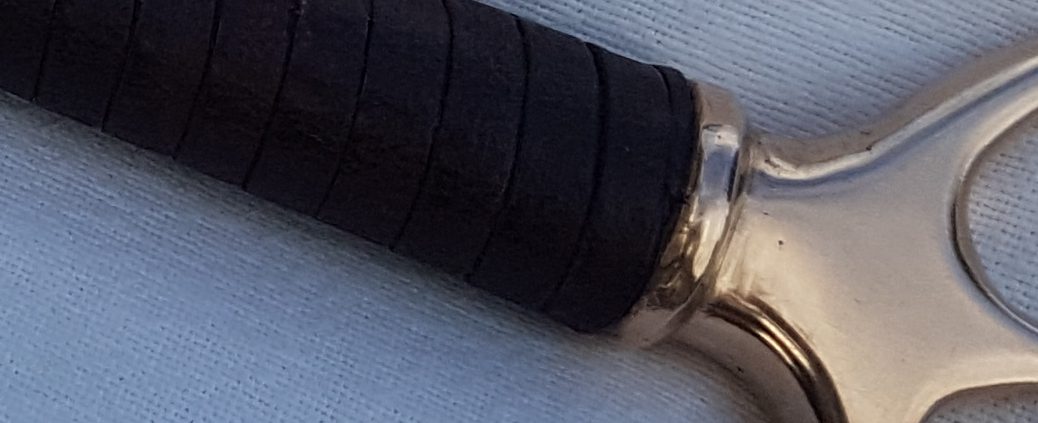
The bronze knife – finishing
I needed to enhance my tool kit if I was to stand any chance of finishing my knife to a reasonable standard.
File under ‘B’ for ‘Bronze’
The Amazon website is my go-to for most purchases these days so I went there in search of files. And bought these …

This is a great little set. The large files are coarse enough to be able to remove a good quantity of material without too much effort. I recall asking James what the early bronze age people would have used for this purpose. His answer was, ‘stone’. Obvious, I guess, when you think about it.
Imperfection & blood
As I worked the knife, I noticed that it had a few small pits in the surface of the blade. Each hole typically no larger than 1mm across and not so deep. Some of these would file out altogether but new ones appeared from under the surface as I reduced the blade thickness. I am not sure what caused these imperfections but I attributed it to impurities. Another suggestion I have since heard is that the holes were caused by trapped gas bubbles in the molten metal. I am still not sure what the most likely cause was.
My filing technique was to clamp the handle of the knife in my workmate with the blade sticking out the side. This meant I could easily run my file down the knife blade and I could turn the blade as required in the jaws of the bench. After not too long I had a keen edge on the blade and on one occasion I ran my finger down the blade with the file. The wound bled profusely. I like to see the positive in things so considered this a routine risk of the job. I also saw it as an impromptu ‘christening’ of my knife. It had drawn its first blood! It’s just a shame it happened to be my own.
Time passes
I was only getting out into my workshop occasionally at weekends and doing an hour’s work here and there. It took me the best part of six months working in this way to get the knife finished to a standard I was happy with. First filing, then using papers of finer and finer grades and finally, wire-wool was used to finish off. This was all done by hand, no power tools were used.


The knife handle seemed to be crying out for some kind of binding. I have since read that knives like this typically would not have had anything on the handle. However, I felt it would finish it off very nicely so I bought some fine leather strap from Ebay. I tapered the end of the leather and stuck it to the handle of the knife. I used that well known bronze age adhesive called ‘super glue’ which stuck the leather to the bronze far better than I could have ever imagined.

Lessons
Considering this is my first ever piece of finished bronze work, I am very pleased with the final result. I learnt a lot from what I produced and enjoyed the process along the way immensely. I guess a big take-away from this experience is knowing how to respond when things don’t go the way you want them to.
For example, I had a particularly large pit in the metal very near the tip of the blade. I managed to file this out, but it left the tip very thin. The tip now easily bends and could break off if bent too much. In order to rectify this now, I would have to refile the end of the blade to reform the shape. But this will of course alter the overall look of the knife. I probably should have left the imperfection alone to maintain strength in the blade. I’ve decided to leave it as-is … for now.
2 Replies to “The bronze knife – finishing”
Thank you for sharing. Lovely looking knife…. I look forward to reading more about any of your future creations.
Many thanks for stopping by.